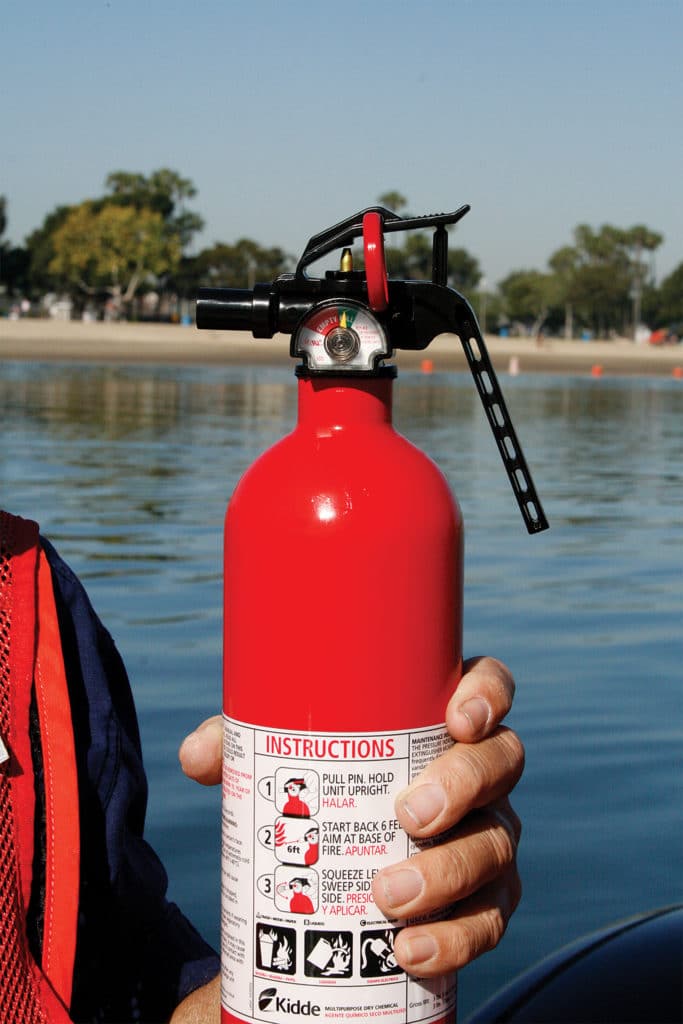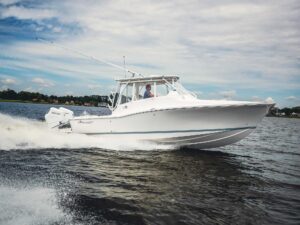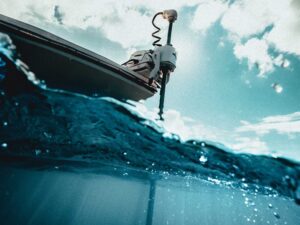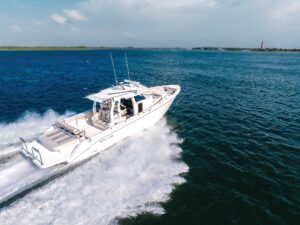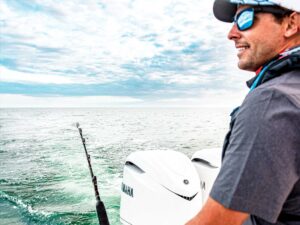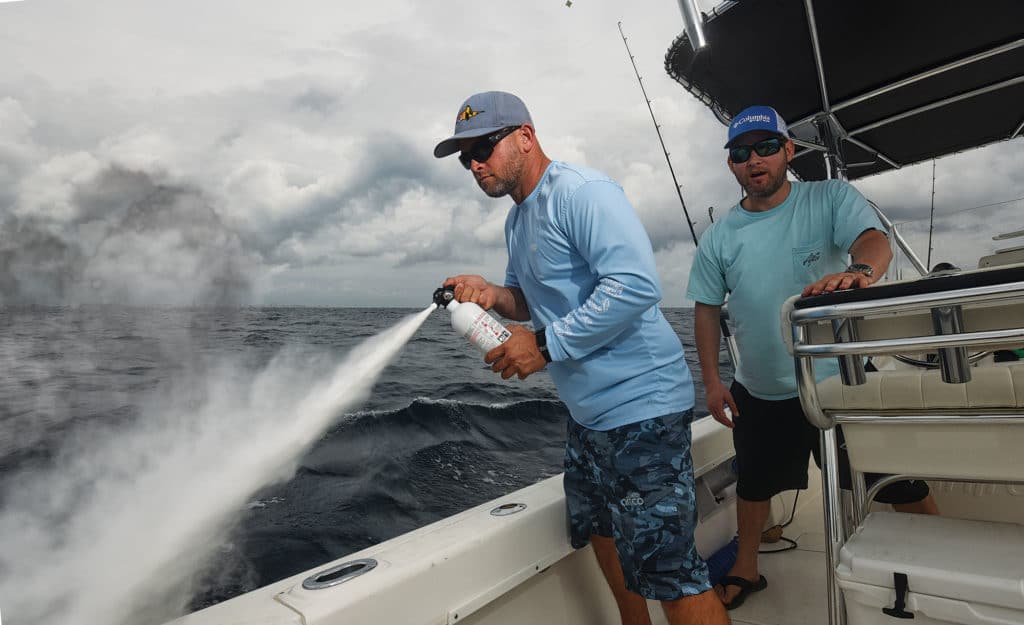
I have firsthand experience with onboard fire. Nearly 35 years ago, aboard my first boat, a rotting fuel hose leaked raw pre-mix into the motor pan of an aging two-stroke outboard. I had no idea that the space under the cowl had become a bomb.
With a flick of the ignition key, the fumes exploded, ejecting the hood and spewing flaming gas into the splashwell and aft cockpit. A lone fire extinguisher mounted aside the center console represented my only salvation. The ensuing moments sped by in a blur as I unbracketed the extinguisher, raced aft, pulled the pin and doused the flames.
The charred deck lay caked in fire-suppressing powder, and the day of fishing was over, but I felt a shaky sense of relief at having averted a major catastrophe or, worse, an injury. I am glad to say that today’s outboards rarely cause such issues, but fire dangers still exist on boats. Fire ranked No. 5 among BoatU.S. insurance claims between 2008 and 2012, based on total dollar amounts. But fire incidents represented only 2.5 percent of all claims during that time period.
Threat levels tend to increase with the age of the craft. That’s why it’s important to inspect onboard systems and fire-safety equipment frequently, and National Safe Boating Week (May 21-27 in 2016) is a good time to start. Use these tips to stave off fire.
[1] Follow Your Nose.
The human nose is one of the best fire-prevention tools. If something does not smell right — from the fumes of raw gasoline to the acrid whiff of an overheating electrical cable — check it out immediately.
A few years ago on an offshore trip, I picked up an odd smell. I lifted the bilge hatch and grabbed the positive cable leading from the battery to the selector switch. The cable seared my hand, so I switched over to the second battery. When I got back from fishing that day, I discovered that corrosion had eaten at the wires, causing the cable to draw excessive amps and grow hot. It was only a matter of time before it would have erupted in flames. I thank my nose for saving the day.
[2] Check the Tank and Hoses.
Gas fumes can result in disastrous onboard explosions and fires. Fortunately, these are rare, particularly on new boats. Yet you should never take fire safety for granted. Give your fuel tank and all hoses and connections a thorough inspection every six months, or ask a qualified marine technician to do so.
On older boats, ethanol-laced gasoline can eat away at hoses, causing them to delaminate and seep gas. Make sure you replace aging hoses with U.S. Coast Guard-approved ethanol-rated hoses, and double-clamp all connections with stainless-steel hose clamps.
Aging metal fuel tanks are prone to corrosion that results in leaks. The original aluminum tank in my current boat, for example, was surrounded by foam flotation material, and water tended to collect between the foam and metal. This led to the development of pinholes due to corrosion and eventual replacement of the tank. The lesson here: Schedule regular checks of the fuel system.
[3] Use Fuses and Breakers.
After my experience with an overheated electrical cable, I have become a nut about adding fuses and breakers. These serve as your silent guardians, ready to sacrifice themselves or to trip and prevent a hot wire from starting a fire. Use the size of fuse or breaker specified by the manufacturer for each accessory.
A recent experience reinforced this precept in my mind. The anchor windlass on my boat stopped working, and my first step was to check the wiring. I discovered a corroded butt connector.
I put in a new connector, but the anchor still didn’t work. So I checked the fuse, and sure enough, it had blown. The corroded connection had caused the windlass to draw excessive amps, blowing the fuse. This cut the circuit and prevented a fire. A new fuse got the windlass working again after repairs.
[4] Fix Corroded Connections.
Corrosion is a fact of life on saltwater fishing boats, but as indicated earlier, it is also a fire-safety issue. Every six months, go through your electrical system (or ask a professional to do so) and look for corroded connections, terminals and wires. Replace any components that show the slightest sign of corrosion, because unlike wine, corrosion does not improve with age. It only gets worse.
[5] Limit External Heat.
Fire needs three elements to exist: oxygen, fuel and heat. It’s hard to escape oxygen; it’s in the air. Fuel can be anything from gasoline and teakwood to fiberglass and plastic. About the only thing you can control on board are external heat sources such as cigarettes. That’s why I don’t allow smoking on my boat.
Also keep a careful eye on cooking appliances such as propane barbecues or electric grills. Watch out for grease fires, which can quickly spread to canvas enclosures and boat upholstery. I like to have a fire extinguisher standing by while cooking on board.
Avoid onboard heaters of any kind, be they electric, propane or alcohol. Better that you wrap up in a warm sleeping bag than risk a fire from such an external heat source.
[6] Install Access Ports.
Newer boats feature hatches to access electrical panels and other enclosed spaces, allowing you to shoot the area with an extinguisher should a fire start. Yet many older boats require tools to remove panels for access to enclosed areas.
Time is of the essence when fighting a fire, so I installed hatches and Marine East Fire-Ports in the enclosures on my older boat. These let me shoot a fire extinguisher behind panels without taking time to remove them.
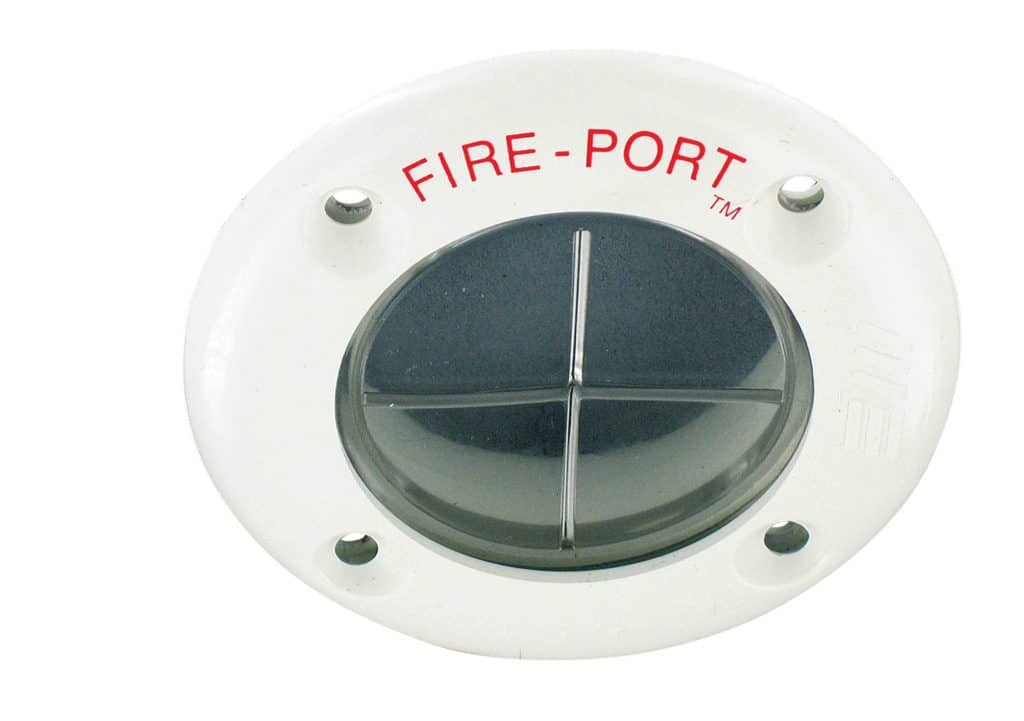
[7] Carry More Extinguishers.
Federal regulations call for one USCG-approved Type B-I hand-held fire extinguisher for boats under 26 feet in length; two B-I or one B-II for boats 26 to 40 feet in length; and three B-I or one B-I and one B-II for boats over 40 feet. The rules vary if there is a fixed fire-suppression system on the boat. Check out the requirements at uscgboating.org.
In addition, the Coast Guard recommends that you inspect fire extinguishers monthly to make sure that the seals and tamper indicators are not broken, pressure gauges read in the operable range, and the nozzle is not clogged or leaking. If anything looks bad, have the extinguisher replaced or recharged. Shake the tank every month to keep the suppressant from caking at the bottom.
As with love, money and live bait, I believe you cannot have too many extinguishers. Though the regulations require one extinguisher on my 22-footer, I have two: one accessible from the helm and one in the cabin. Just as when my boat caught fire 35 years ago, a fire extinguisher might be your only salvation. If it comes to that, I’ll double down.
